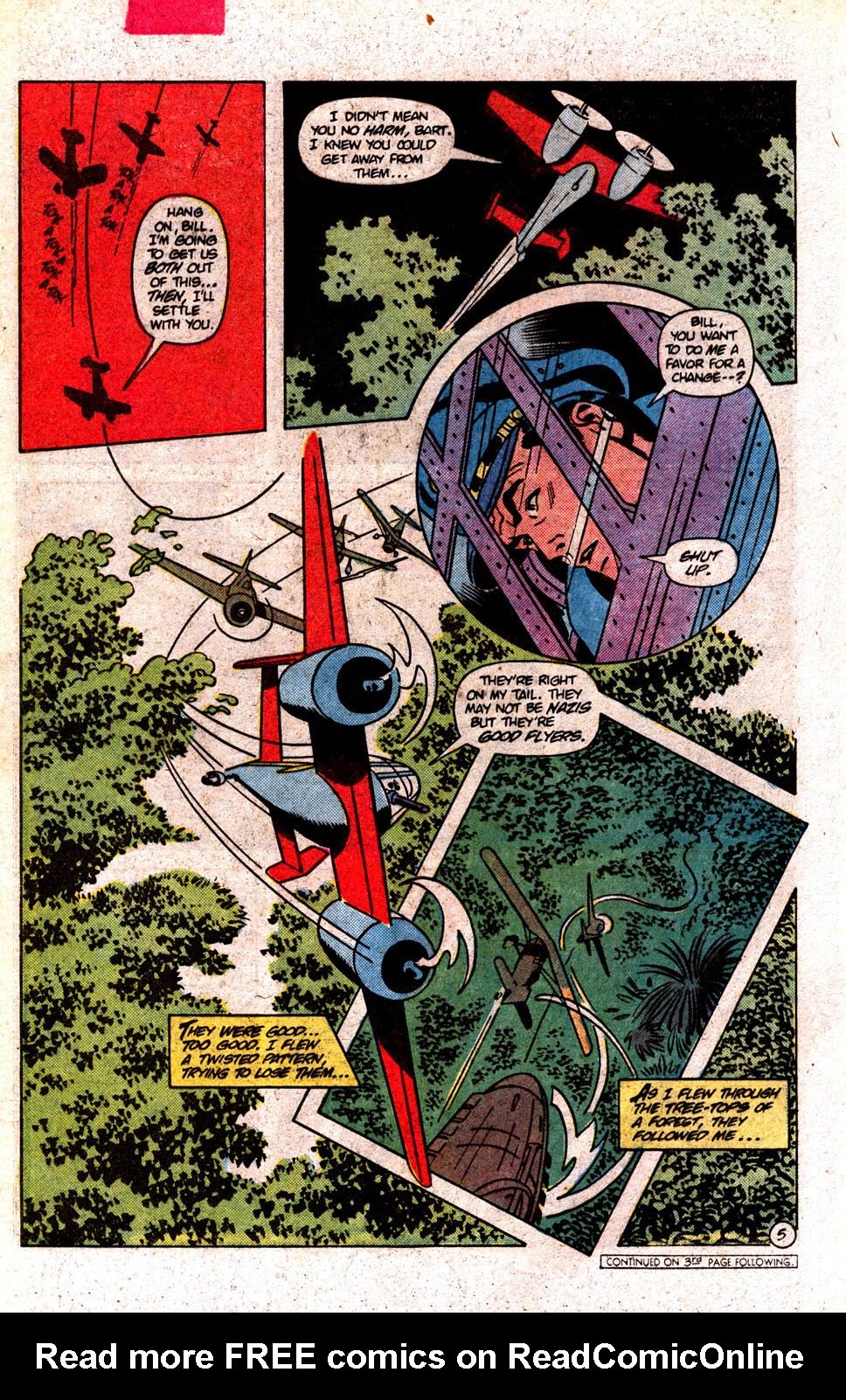Day Two (#11)
Blackhawk Detached Service DiaryBeginning with #201 (October 1964), and continuing through #227 (December 1966), the Detached Service Diary alternated regularly with the only recently introduced Blackhawk Combat Diary as the back-up feature in
Blackhawk. (The only exception was #210 in which the second story was a reprint from #139.) The DSD was the back-up feature in #s 201, 204, 206, and 208 and in all the odd-numbered issues from #211 through #227, not a bad little run.
Because the World War Two-set Combat Diary, which first appeared in #s 196 and 200, featured the entire team in action (though occasionally spotlighting one or two of them), it didn’t qualify for my list. There were three notable exceptions, of which more later.
However, the DSD, usually narrated and/or introduced by Blackhawk himself, always focused on just one of the seven Blackhawks, which is what qualified it as a choice for this year’s event.

Chuck was the star of three solo stories; Andre and Blackhawk starred in just one DSD each, and the other four Blackhawks each appeared twice.
Over in the Combat Diary, three stories did not feature the entire team: 200 featured only Blackhawk; 202 focused on Andre and Hendrickson; and 212 was a solo turn by Chop-Chop. Thus, in all, there were 15 solo stories spun off from the main feature over the two years or so it ran.
Give Kashdan credit; a bunch of letters pages included letters asking for stories about Chop-Chop, especially for his origin and first adventure with the Blackhawks, and Kashdan delivered on those as he did on the solo stories. Chop-Chop's origin was the cover story in #203, and he wound up tied with Chuck with three solo stories, two DSD and one BCD.
Both features seem to have been created in response to what one letters page described as a “huge flow of requests” for stories focusing on the individual members. In the letters page to #201, we were told by editor George Kashdan that solo stories of the team had been promised “some months back” after he’d received letters inquiring about the various Blackhawks’ individual skills, such as Hendrickson’s marksmanship, Stan’s strength and Olaf’s acrobatic skills. No surprise then, that Hendy, Stan and Olaf were the first three members to star in a DSD story.
(As with the content of all letters pages, be skeptical. Be very, very skeptical.)
My guess is that after decades and without Nazis to fight, a lot of heavy lifting was required on the writers’ part to inject anything new into the Blackhawks’ exploits. And unlike titles like JLA and the Legion in Adventure all the members of the Blackhawks always were in every story, and Blackhawk himself usually hogged the spotlight, which made it even tougher to give anybody much personality beyond foreign expressions in their dialogue: “Py Yiminy;” “Sacre Bleu!” and “Donnerwetter!” got a lot of mileage in Blackhawk sagas.
Not that the DSD or the BCD stories gave us three-dimensional characters in their seven or eight pages, but at least they were less crowded. If you were a reader of DC’s war comics, the DSD stories would remind you of the Kanigher back-ups: heroic actions against superior forces with the protagonist having to use his own particular strength to survive and defeat the bad guys.
As a non-shaving kid relatively new to the world of the Blackhawks, though, I liked these stories because they fleshed out the “Blackhawk Universe” somewhat and gave the lesser characters a moment to shine.
Like the other DC adventure characters (Challengers, Sea Devils, Rip Hunter, etc.) whose comics I loved reading, the Blackhawks existed pretty much in their own world, with no mention of any other DC characters in their stories ...until it all ended abruptly when
Blackhawk jumped the skids, hit the shark, and tried to go all “POW! BAM! SUPERHEROES!” late in 1966 with the infamous “Junk-Heap Heroes” run.
(The proof would eventually be in the costumed pudding;
Blackhawk’s monthly sales figures dropped from 228,000 to 157,000 from 1966 to ’67 and the title fell from its slot squarely in the middle of the DC pack to nearly last place and it was canceled in 1968 with #243.)
After an abortive six-issue run that resulted in a second cancellation in 1976, Mark Evanier and Dan Spiegle revived the title in 1982, set it where it belonged -- in World War Two -- and to the delight of at least one old Blackhawk fan, brought back the Detached Service Diary in almost every issue of its two-year run. In fact, in a throwback to the three-story format of many Silver Age DC titles, Evanier wrote several issues in which there were three stories, each an installment of the DSD.
That entire
Blackhawk revival is well worth seeking out; Evanier was clearly not just a fan of the old-fashioned World War Two era of the Blackhawks, but he was also able to bring a modern, adult (but not lurid) tone to the storytelling, and the Dan Spiegle art is exceptional. Many of the DSD entries were also drawn by the likes of Dave Cockrum, Howard Chaykin and John Severin; and Alex Toth -- Care for a sip?

Those DCD stories only add to the class and stylishness of Evanier and Spiegle's unjustly forgotten gem of a series.